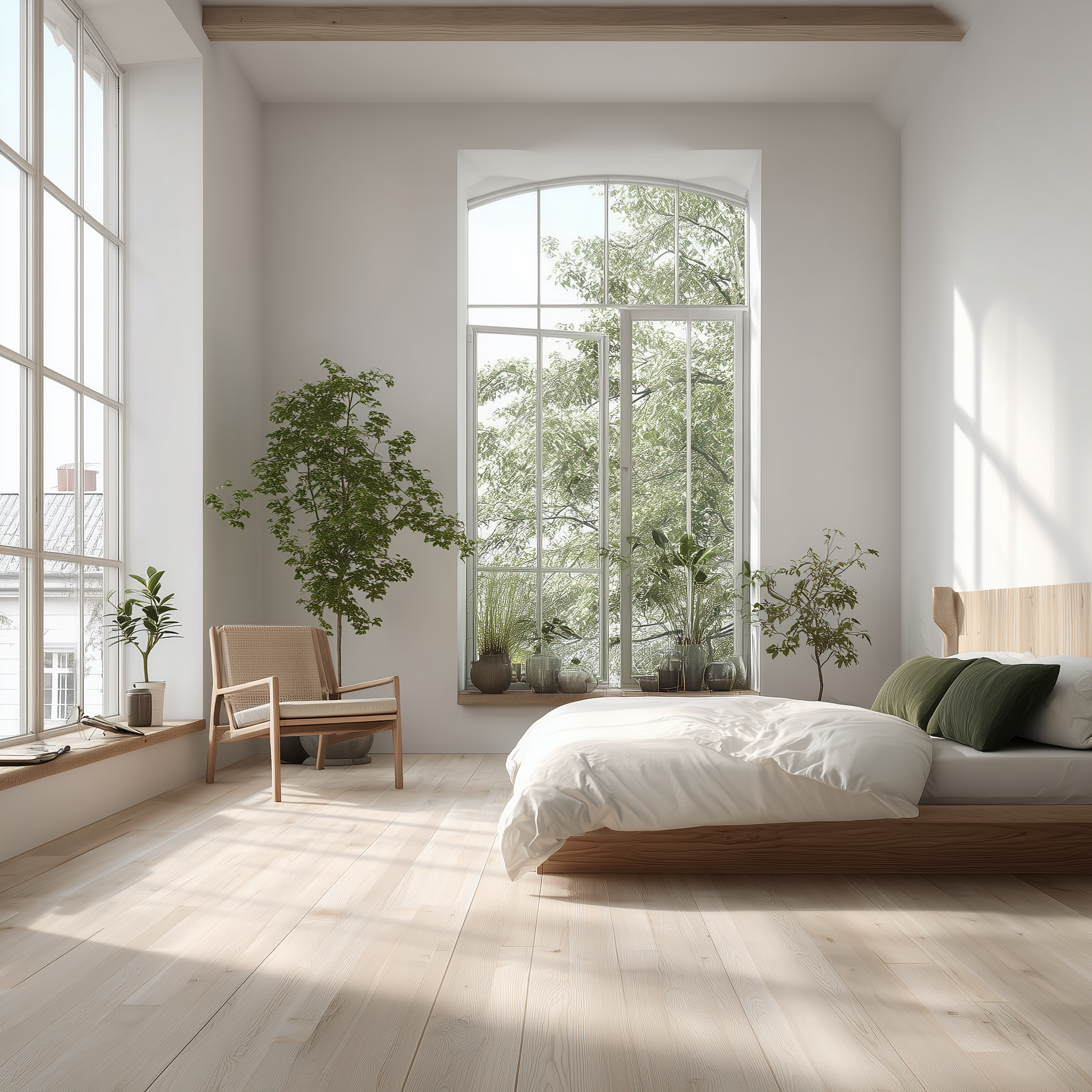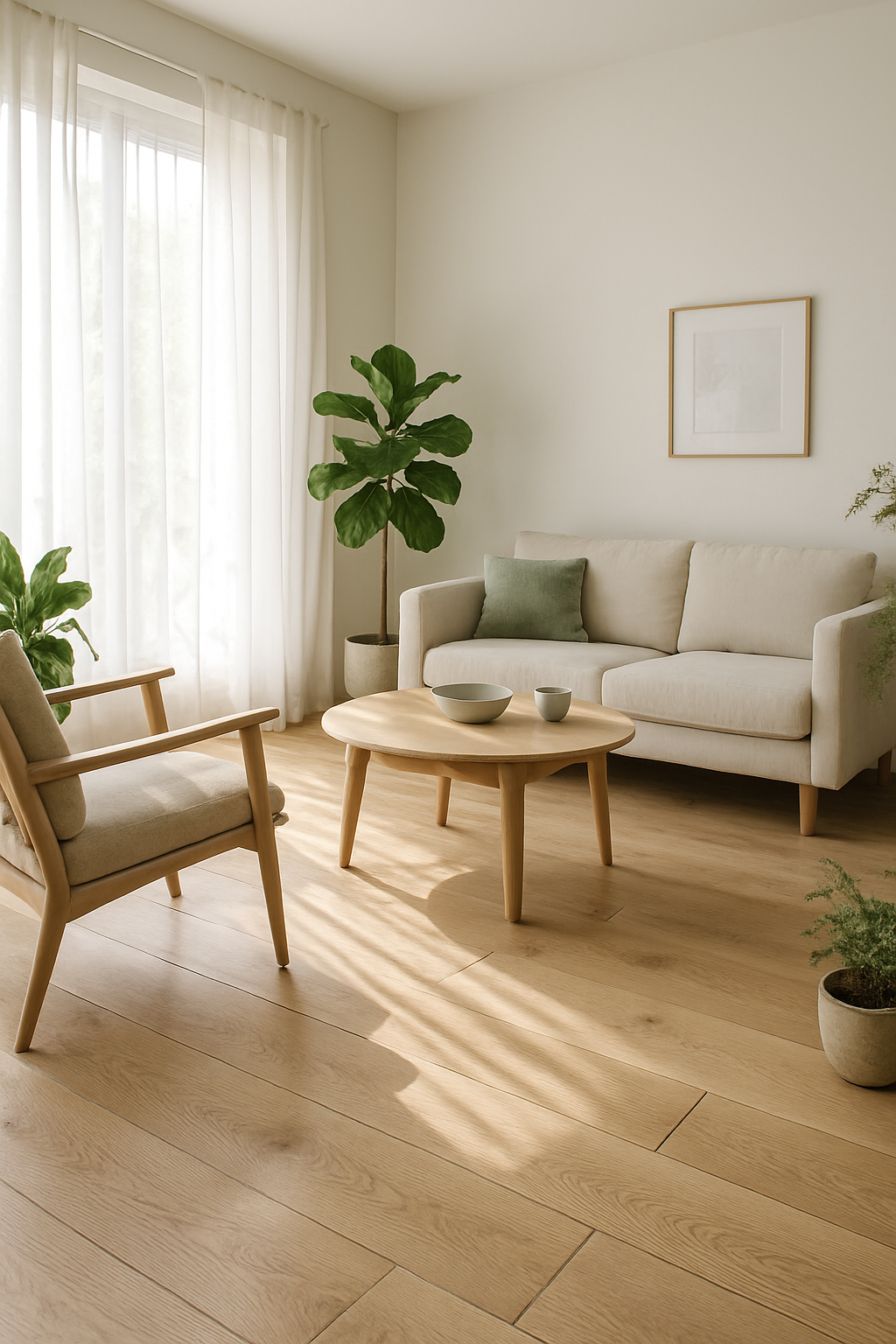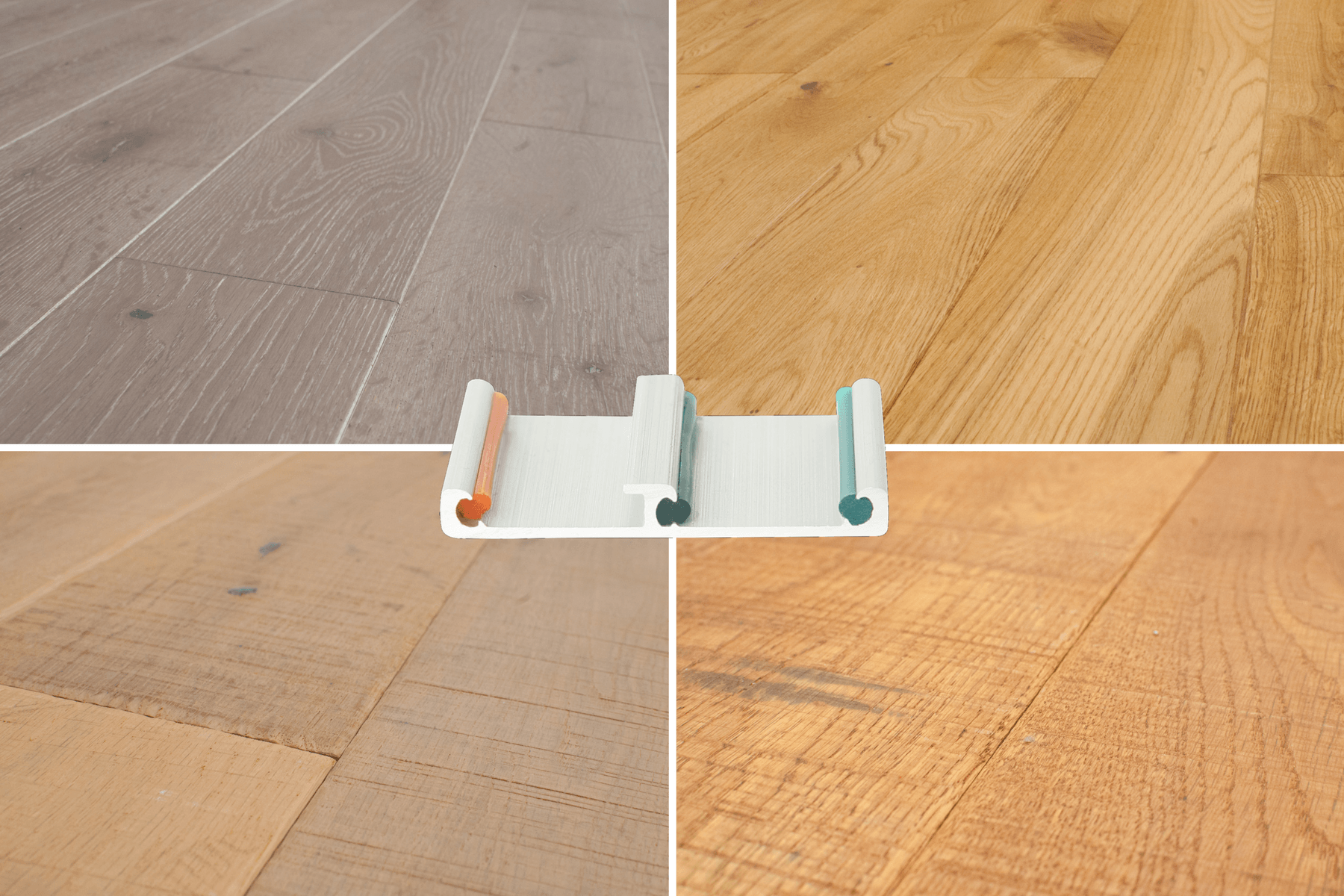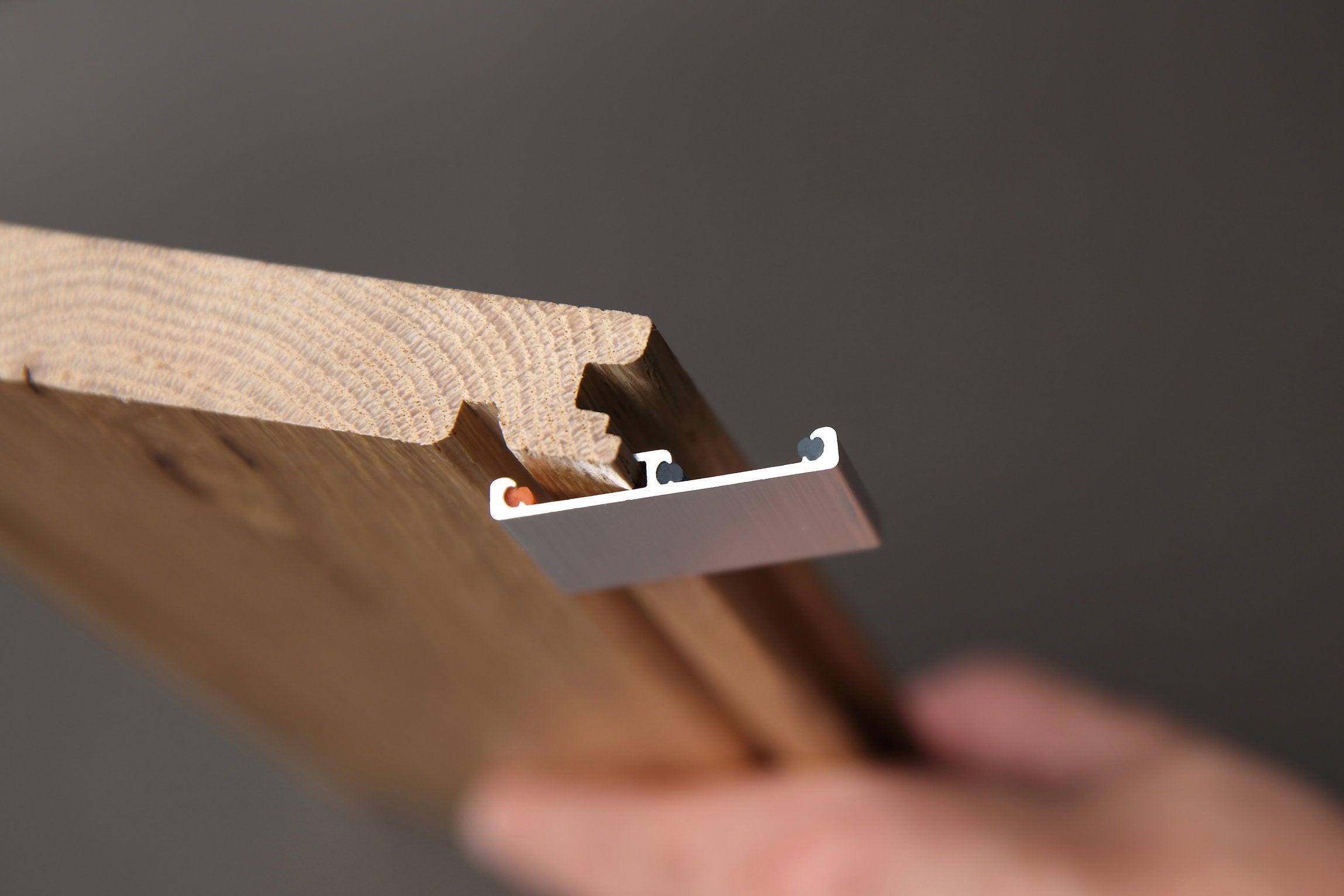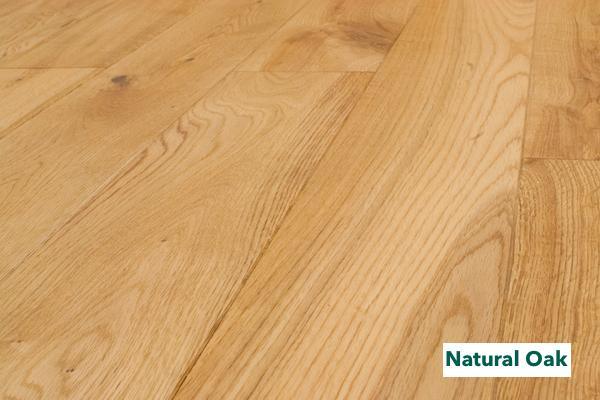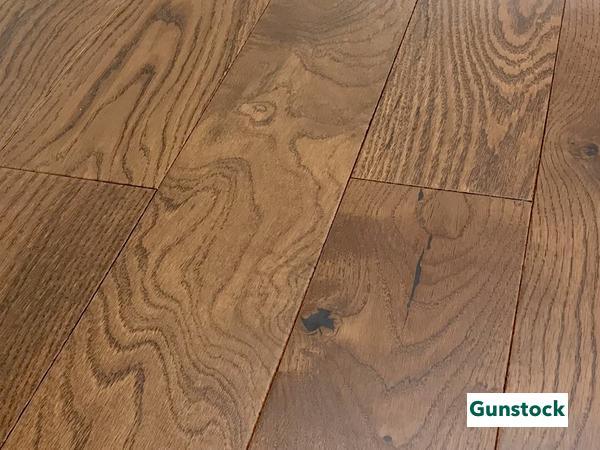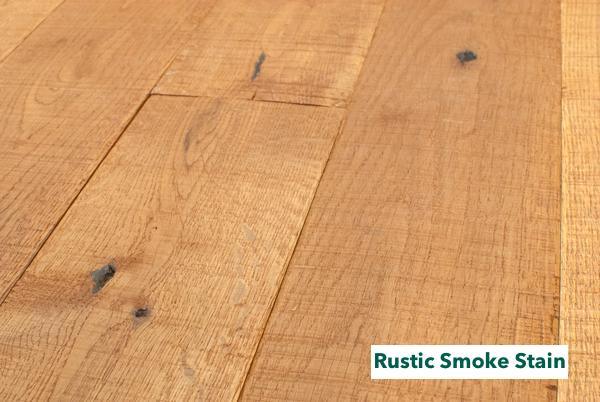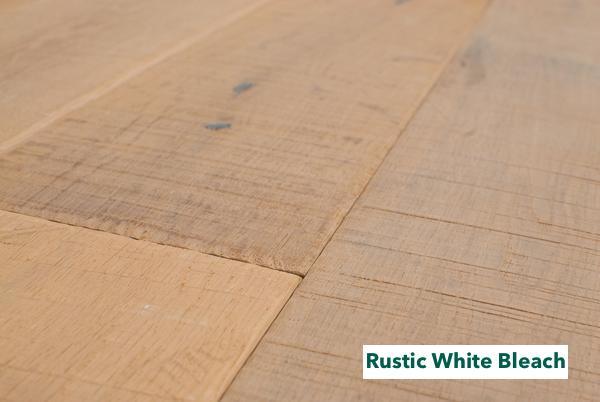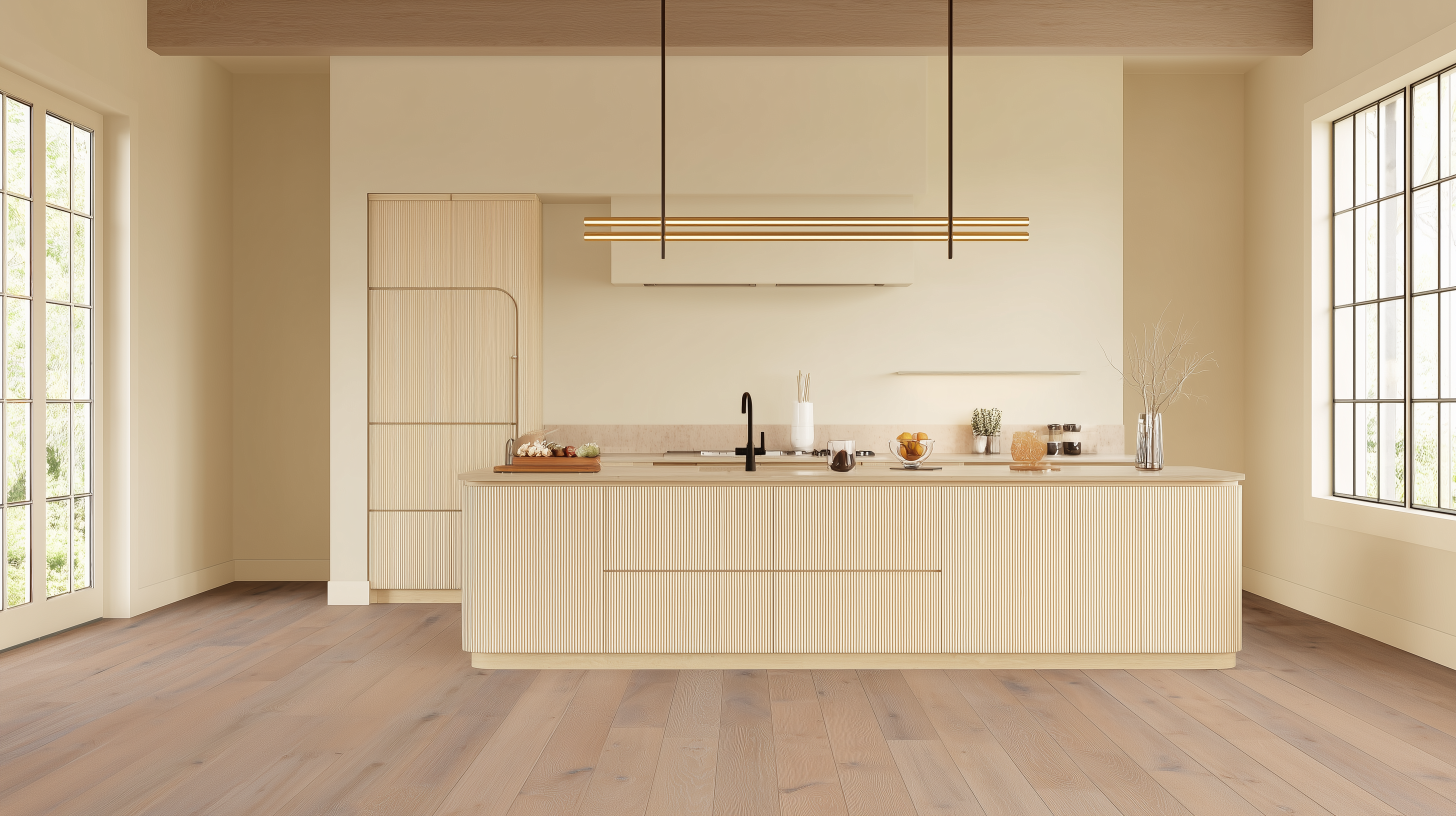Are you and your family unknowingly living with toxic fumes in your home? Volatile Organic Compounds or VOCs are gases that can become trapped in your home. They became a household concern when a story broke back in 2014. A report linked Chinese-made laminate flooring to toxic levels of formaldehyde in hundreds of homes in the U.S.
The result of this report was that consumers became aware of products that are endangering our health and environment. Flooring companies and regulatory agencies were forced to set new standards. You should know that the problem still exists.
In this article, you’ll discover the answers to:
- What are VOCs?
- How do you test for them?
- What is formaldehyde?
- Why do they use it in flooring?
- What is low VOC flooring or eco-friendly flooring?
Know what to look for to make a safe choice about new flooring in your home.
Understanding VOCs
A volatile organic compound or VOC is a chemical that has high vapor pressure at room temperature. The molecules sublimate or evaporate into the air. A good example is rubbing alcohol. When you pour it on your hand, it immediately starts to evaporate, transforming into gas and mixes with the air you breathe.

Many household chemicals have VOCs, from cleaning products to paint and solvents. Sometimes we call them fumes. That “new car smell” or the scent of a freshly painted room occur due to “outgassing” of the VOCs in the paint, adhesives or plastic.
It’s vital to understand VOCs because many of these compounds can be dangerous to human health.
The EPA studied Volatile Organic Compounds’ Impact on Indoor Air Quality. As we have mentioned, the sources are from almost every product we use. Here is their list:
Household products, including:
- Paints, paint strippers, and other solvents
- Wood preservatives
- Aerosol sprays
- Cleansers and disinfectants
- Moth repellents and air fresheners
- Stored fuels and automotive products
- Hobby supplies
- Dry-cleaned clothing
- Pesticides
Other products, including:
- Building materials and furnishings
- Office equipment such as copiers and printers, correction fluids and carbonless copy paper
- Graphics and craft materials, including glues and adhesives, permanent markers, and photographic solutions.
In this article, we're concerned only with the chemicals related to flooring and finishes. The good news is that there are many oil-based and water-based floor finishes that have low amounts of VOCs. As we’ll see in a moment, the adhesives in engineered flooring can cause unhealthy levels of VOCs, especially formaldehyde.
The Hidden Health Risks

Did you know that Volatile Organic Compounds indoors can be as much as ten times higher than outdoors due to low air circulation? For example, while painting or stripping indoors, levels can be 1,000 times higher than outdoors. They can linger for several hours after. It’s important to follow instructions and use proper ventilation.
Breathing the fumes in high quantities or for long periods can cause severe health problems.
Health effects from breathing in VOCs may include:
- Eye, nose and throat irritation
- Headaches, loss of coordination and nausea
- Long-term damage to the liver, kidney and central nervous system
Tests show that some VOCs can cause cancer in animals and may cause cancer in humans.
Long-term exposure or high concentrations of VOCs can cause symptoms like:
- Allergic skin reaction
- Conjunctival irritation
- Declines in serum cholinesterase levels
- Dizziness
- Dyspnea
- Emesis
- Epistaxis
- Fatigue
- Headache
- Nausea
- Nose and throat discomfort
The ability of organic chemicals to cause health effects varies greatly from those that are highly toxic to those with no known health effect.
There is evidence that concentrations of some specific VOCs may be related to the occurrence of respiratory symptoms, headaches, and fatigue. Some reports refer to these symptoms as “Sick Building Syndrome.” The actual causes of these possible effects are unknown. However, many come directly from flooring materials and the adhesives used in the process.
The Most Common Offenders
These are four of the most common toxic VOCs found in homes today.
- Formaldehyde – It is important to note that there are two types of formaldehyde, Phenol, and Urea. Phenol formaldehyde is non-toxic, but it is much more expensive. You’ll find it in marine grade plywood, high-end furniture, and cabinetry.
- Urea Formaldehyde is one of the most toxic VOCs, and it’s one of the few indoor air pollutants homeowners can measure. The best way to combat it is to identify and remove the source if possible. Otherwise, reduce exposure by sealing all exposed surfaces of paneling, flooring, or other furnishings.
- Perchloroethylene - This is the chemical used in dry cleaning, and laboratory studies show it to be carcinogenic in animals. It is present in homes that store improperly processed dry-cleaned goods. Tip - Don’t accept dry cleaning with a noticeable chemical smell.
- Benzene – Benzene is a common chemical found in our environment from sources like tobacco smoke, stored fuels, paint, solvents and automobile emissions in attached garages. Refinished floors can emit large quantities of benzene.
- Methylene Chloride – This VOC is present in paint strippers, adhesive removers, and aerosol spray paints. What makes it so dangerous is that your body converts methylene chloride into carbon monoxide. Overexposure leads to the same symptoms as carbon monoxide poisoning. Use only outdoors whenever possible, never in a closed room.
It’s one thing to know that you are about to create a VOC hazard by painting or stripping. You have some control. However, what happens when you are unaware of them because they are already part of the products in the home before you moved in? You and your family may unknowingly live in a space filled with hazardous VOCs and don’t even know it.

It happened to thousands of homeowners who had cheaply made flooring from China.
When Flooring Made Headlines
Lumber Liquidators is a national flooring company that buys from flooring manufacturers and sells directly to the consumer. From January to May 2015, they sold laminate flooring made in Chin The flooring was said to be "low voc vinyl flooring", but unfortunately, the adhesives contained toxic levels of formaldehyde, and homeowners across the country were becoming ill from the off-gassing.
CBS “60 Minutes” broadcasted a stunning report about the conditions on March 2015. It created a consumer backlash and a federal investigation. The outcome was that Lumber Liquidators Holdings Inc. must pay a $33 million criminal penalty for misleading American consumers about the safety of their products.
The only upside is that both consumers and manufacturers are now aware of the problems of exposure to VOCs.
You can view the original 60 Minutes broadcast here.
Why Flooring Uses Formaldehyde
Formaldehyde is one of the most well-studied and understood chemical compounds in commerce. It is known for it's anti-bacterial and preservative properties. Despite it's bad reputation in many news sources, you might be surprised to know that it is a naturally occurring compound in your body and is used in many products from automotive products and personal care items, to health care products and even some vaccines!
Formaldehyde is an building block in the glue that is used to bind wood vaneers (thin layers of wood) or wood particles together when producing "manufactured wood products" like plywood, MDF (medium density fibreboard) or particleboard. It is essential and very difficult to substitute in this process. It is also very economical.
Formaldehyde can also be found in some flooring finishes or glues used to install laminate or engineered flooring as it is a key ingredient used to make a great binding agent. Some foam underlayment even contains formaldehyde to help make foam soft.
Setting the Standards
The U.S. Environmental Protection Agency (EPA) has established "acceptable limits" for formaldehyde emissions. These limits are compliant with the CARB's (California Air Resource Board) Airborne Toxic Control Measure and have been in effect since 2017.

Underwriters Laboratories (UL) has a booklet about formaldehyde you can download called, “FORMALDEHYDE IN COMPOSITE WOOD PRODUCTS: Meeting the New U.S. EPA Regulations.” It will give you plenty of information on formaldehyde off-gassing from composite wood products.
Practical Ways to Reduce Exposure
Your home has many sources for volatile compounds. Following are the best ways you can reduce your exposure to them.
- Open Windows When Possible – Increase the ventilation when using any products that emit VOCs. Increasing the air circulation with fans helps remove any build-up.
- Follow Directions – Read and follow the manufacturer’s instructions before using any hazardous products such as paint remover, paint, bug spray, or floor finishes.
- Buy Products From Trusted Sources – As we’ve seen in the Lumber Liquidator story, purchase flooring only from approved vendors.
- Don’t Store Unused Paint or Solvents Inside – Closed containers can still emit fumes.
- Identify and Remove Sources of Formaldehyde – Some engineered flooring may be the culprit.
- Reduce Pesticide Use – Call in professionals with approved products. For DIY pest control products, use sparingly, and follow directions.
- Never Mix Products – Most household cleaners contain either ammonia or bleach. Mixing the two creates deadly chlorine gas.
- Dispose of Unused Products – Most cities and towns have safe ways of collecting unused paint, solvents, and other chemicals. Get them out of the house, but don’t throw them in the garbage.
- Use VOC-FREE Flooring - One of the biggest surface areas in your home is your floor. Use non-toxic flooring like Easiklip to easily install healthy hardwood yourself.
How to Test Your Home
You can buy formaldehyde digital testers that measure “total volatile organic compound" or "TVOC" concentrations along with other unhealthy contaminates.

They are inexpensive, hand-held devices that make it easy to check any room or space. For additional information about exposure levels, download:
California Title 17 ATCM to Reduce Formaldehyde Emissions from Composite Wood Products.
Safer Finishes for Your Floors
Do you plan on refinishing the floor in your home? You should know that by law, varnishes should contain less than 450 grams of VOCs per liter and lacquers only 350 grams per liter. Look for products with the lowest VOC content. Although oil-based finishes can off-gas for years, it’s most severe during the first few days after application.
A safer, greener alternative is water-based products. They contain around 250 to as little as 50 grams of VOCs per liter. Choose linseed, Tung, and other natural oils. Water-based finishes and natural oils still off-gas like oil-based finishes, but it occurs much more rapidly, due to the faster drying time.
Healthier Flooring Alternatives
The amount of volatile compounds emitted from flooring products depends upon the processes and chemicals used in the manufacturing process. The cause of poor indoor air quality can be inadequate ventilation and excessive emissions of volatile organic compounds from adhesives and finishes.
One area of concern is the sub-floor. If you use an adhesive, look for low VOC type adhesives to glue down the sub-floor. Liquid Nails is one brand that offers a VOC-compliant adhesive.

Regarding your new flooring, consider these materials:
Solid Hardwood

Solid hardwood floors give off almost no VOCs in their natural state. It’s all about the finish and how it’s applied. Finishing a floor in the home will create large quantities of VOCs while the stain and finish cure.
The best bet for low or no VOCs is pre-finished solid hardwood floors such as Easiklip. Pre-finishing means the coatings have had time to cure, usually under heat and UV light. The VOCs have ample time to escape in the warehouse before installing in your home.
Bamboo

Again, it depends on the manufacturer or if you finish the floor in the home. Most bamboo, but not all, have some urea-formaldehyde. Finishes on bamboo floors may contain high levels of it. Check with the dealer and manufacturer for documentation and proof of the claims they make about formaldehyde. Look for water-based finishes.
An easy way to tell is by smelling a sample before you buy.
Cork

The binding agents in cork flooring use urea melamine and phenol-formaldehyde. However, most of these compounds off-gas during processing. The more significant source can come from the adhesives used to install the flooring. Buy an adhesive with a low VOC rating or that meets E1 standards.
If you plan to finish the floors after installation, use water-based polyurethane.
Laminate Flooring

Laminate floors typically have more VOCs than other floorings due to the adhesives in the process. They are the worst option for a healthy home.
Engineered Wood Flooring

Engineered wood uses much of the same processes as laminates. They can also outgas for months. However, there are options with low or no VOCs. You’ll need to do your homework to find the brands that don’t use formaldehyde and that produce low levels of volatile compounds.
Linoleum
Linoleum is a combination of linseed oil, binders, sawdust, limestone, and dry pigments applied to a natural jute backing. These floors tend to outgas when new, but it’s harmless linseed oil that dissipates quickly.
Vinyl

Although vinyl and linoleum look similar, they are very different. Vinyl is a petroleum-based product made from polyvinyl chloride (PVC). It can outgas chemical compounds for years. Some of the VOCs are believed to cause illness and even increase cancer risk.
It's one of the cheapest options, but for good reason. Do your research and check out this study on toxic chemicals being widespread in vinyl flooring.
Low VOC vinyl flooring may be hard to find. So there are healthier flooring choices than vinyl for your family.
Carpet

Since most carpeting is synthetic, they can be a source for VOCs. Look for brands that promote low-VOCs. Added features like flame retardants, mothproofing, and stain repellents add to the chemical mix and increase outgassing.
Look for natural fibers like wool and opt-out of the extras mentioned above. Also, use natural padding materials and water-based glue.
Easiklip’s Eco-Friendly Solution
There isn't really such a thing as Zero VOC wood flooring, since natural wood itself actually contains trace amounts of formaldehyde and other VOCs. In fact, your own body even produces its own formaldehyde at times, which is converted into one of the building blocks for DNA!
So in reality, no solid wood flooring is actually zero VOC. However, companies that use stains and finishes on their solid wood flooring (not laminate, engineered) that do not contain any VOCs can call their product VOC free flooring. This is because the levels of formaldehyde and other VOCs emitted by the natural wood are so low they are considered only to be 'trace' amounts and are not harmful to humans.
At Easiklip Floors, we use Klumpp coatings for all our solid wood flooring. These coatings are VOC free and eco friendly. We also had our flooring tested for emissions by Eurofins, an international laboratory that tests for environmental effects in consumer goods by European standards.
Our flooring scored an A+. The total VOCs detected after 28 days were only 15 micrograms per m3, which is considered virtually VOC free. To put this in context, to score an A+, a product must emit less than 1000 micrograms per m3, which is considered totally safe. So if 1000 is considered safe and unharmful, our score of 15 should definitely put your mind at ease!
For your best non-toxic flooring option, check out our selection of beautiful, solid hardwood.
Bring Natural Elegance Home
For flooring that combines beauty with peace of mind, explore Easiklip’s solid oak floating floors. Prefinished with VOC-free coatings and designed for simple DIY installation, they are as safe as they are stylish.
Order your free sample today: https://easiklip.ca/pages/order-samples
Explore pricing here: https://easiklip.ca/pages/pricing
Experience hardwood without compromise.
